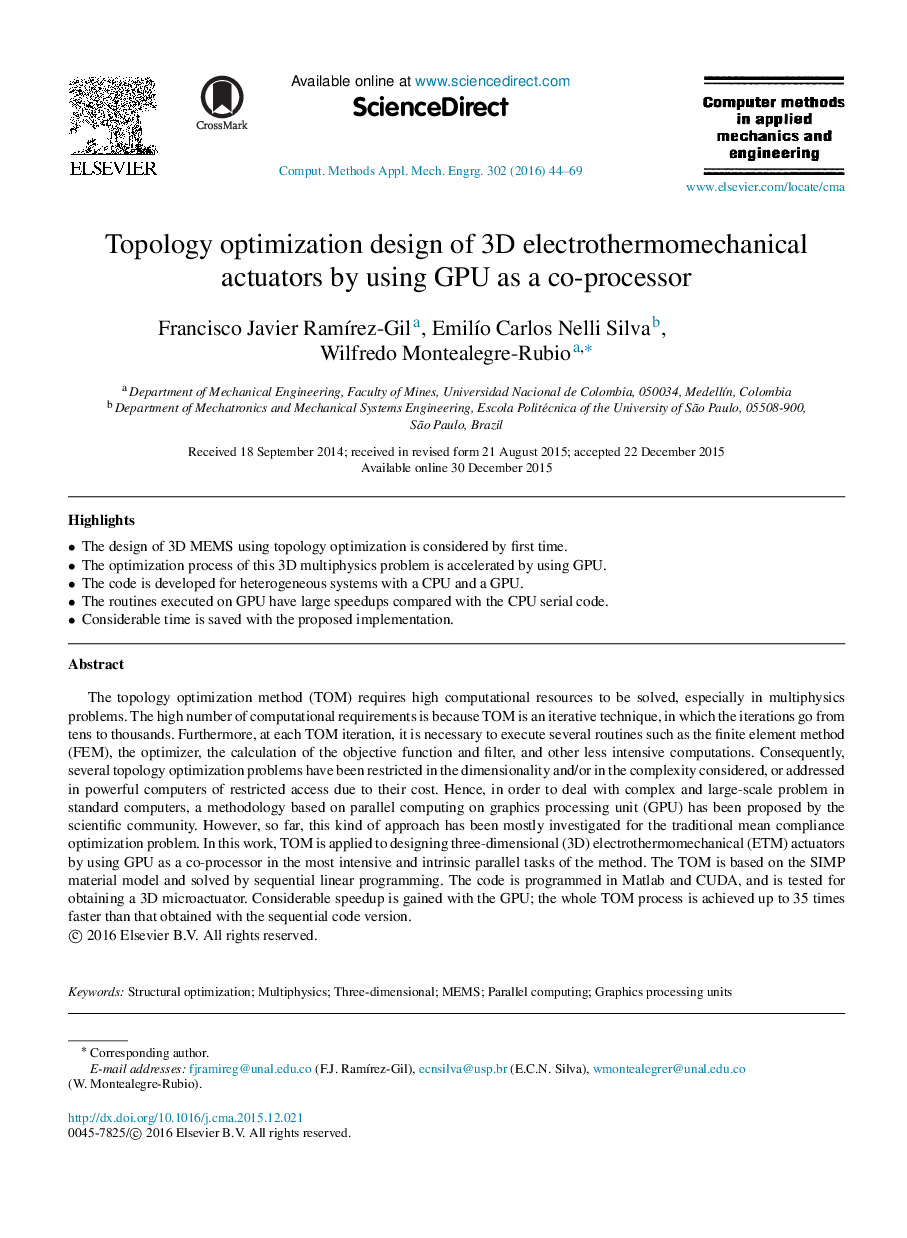| کد مقاله | کد نشریه | سال انتشار | مقاله انگلیسی | نسخه تمام متن |
|---|---|---|---|---|
| 497615 | 862931 | 2016 | 26 صفحه PDF | دانلود رایگان |

• The design of 3D MEMS using topology optimization is considered by first time.
• The optimization process of this 3D multiphysics problem is accelerated by using GPU.
• The code is developed for heterogeneous systems with a CPU and a GPU.
• The routines executed on GPU have large speedups compared with the CPU serial code.
• Considerable time is saved with the proposed implementation.
The topology optimization method (TOM) requires high computational resources to be solved, especially in multiphysics problems. The high number of computational requirements is because TOM is an iterative technique, in which the iterations go from tens to thousands. Furthermore, at each TOM iteration, it is necessary to execute several routines such as the finite element method (FEM), the optimizer, the calculation of the objective function and filter, and other less intensive computations. Consequently, several topology optimization problems have been restricted in the dimensionality and/or in the complexity considered, or addressed in powerful computers of restricted access due to their cost. Hence, in order to deal with complex and large-scale problem in standard computers, a methodology based on parallel computing on graphics processing unit (GPU) has been proposed by the scientific community. However, so far, this kind of approach has been mostly investigated for the traditional mean compliance optimization problem. In this work, TOM is applied to designing three-dimensional (3D) electrothermomechanical (ETM) actuators by using GPU as a co-processor in the most intensive and intrinsic parallel tasks of the method. The TOM is based on the SIMP material model and solved by sequential linear programming. The code is programmed in Matlab and CUDA, and is tested for obtaining a 3D microactuator. Considerable speedup is gained with the GPU; the whole TOM process is achieved up to 35 times faster than that obtained with the sequential code version.
Journal: Computer Methods in Applied Mechanics and Engineering - Volume 302, 15 April 2016, Pages 44–69